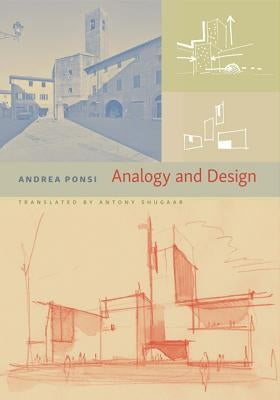Before you leave...
Take 20% off your first order
20% off
Enter the code below at checkout to get 20% off your first order
Discover summer reading lists for all ages & interests!
Find Your Next Read

Analogical thought is fundamental to creativity. The use of analogy can help to solve problems, make connections between disciplines, and use those relations to form original solutions.
In Analogy and Design, Andrea Ponsi considers the role of analogical thought in architectural design. Almost all work in design and architecture is the result of analogical thinking, with respect to systems derived from nature, technical and scientific models, artistic experiences, and above all past models of architecture or objects. Ponsi considers the history of architecture through a series of examples that demonstrate the value of analogy as both creative technique and didactic tool.
As an architect and product designer, Ponsi himself operates on a set of principles he terms "analogous design"--a theory he developed that involves breaking down images into abstract elements, analyzing them, and then conceptually reassembling them in another form as a sort of parallel composition. In Analogy and Design, he looks at the principal models designers have utilized as their reference from the beginning to our own day: primary analogies, that is to say the human body, nature, and the abstract universe of signs; disciplinary analogies, taken from already existing examples of architecture and design; and analogies from outside the field, such as from music, literature, and the visual arts. The components are very different, but they maintain a similar relationship to each other. This methodology, Ponsi maintains, can be applied to compositions of a wide variety of types, including buildings, landscapes, household products, furniture, music, and literature.
Merging scientific and academic research--so often limited to a specialized audience--Analogy and Design lays down the principles of analogous design, enabling a student or practitioner to "see" works and materials in a new way.
Andrea Ponsi is an architect, designer, writer, and educator currently living and working in Florence. He is the author of San Francisco: A Map of Perceptions and Florence: A Map of Perceptions (both Virginia), among other books. Antony Shugaar is the translator of numerous works of both fiction and nonfiction from Italian.
Thanks for subscribing!
This email has been registered!
Take 20% off your first order
Enter the code below at checkout to get 20% off your first order